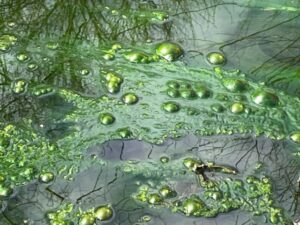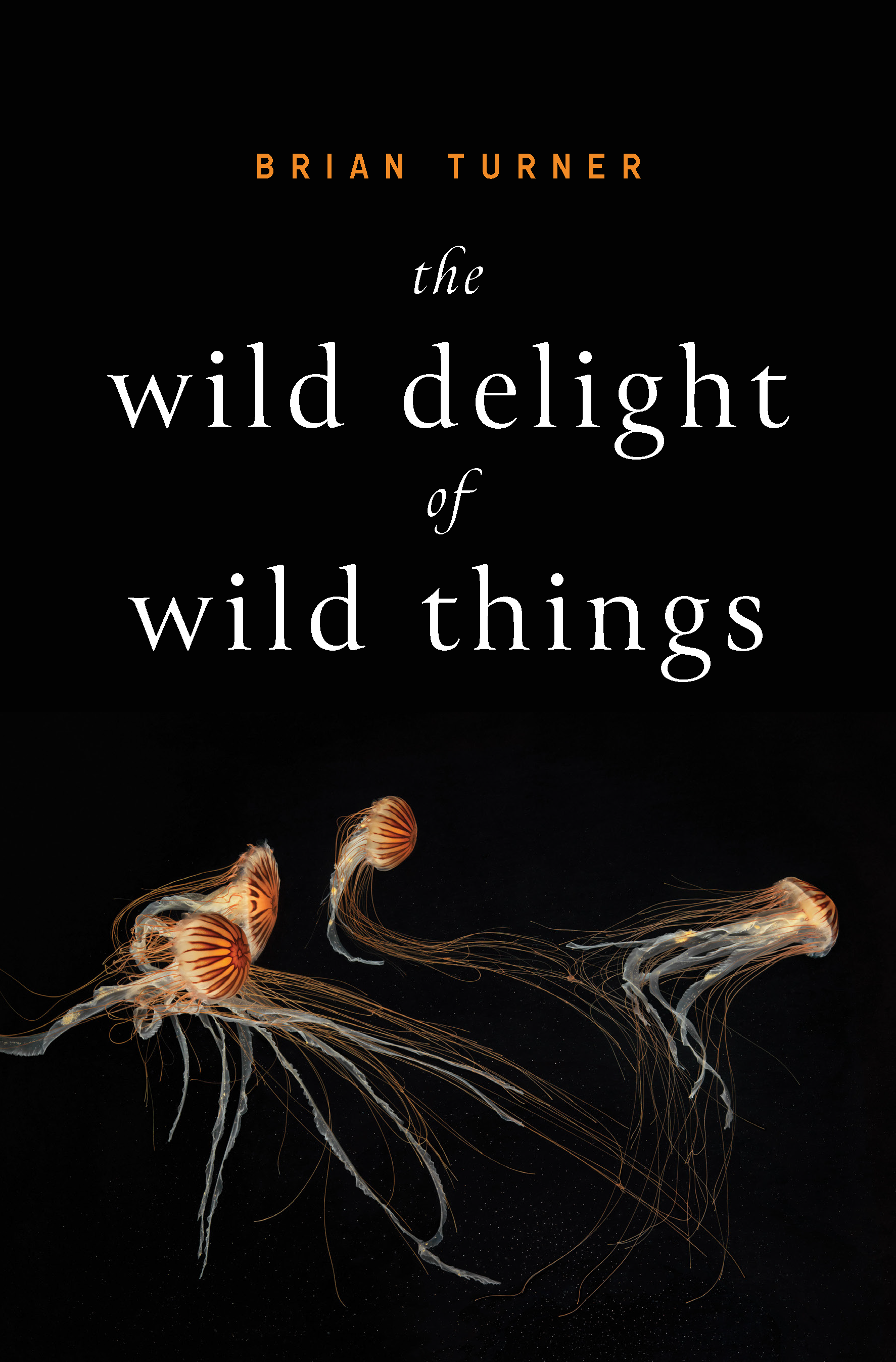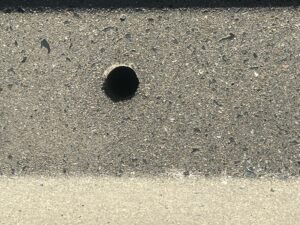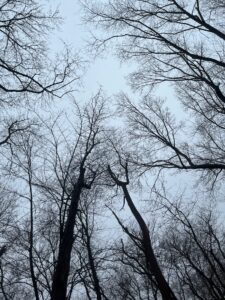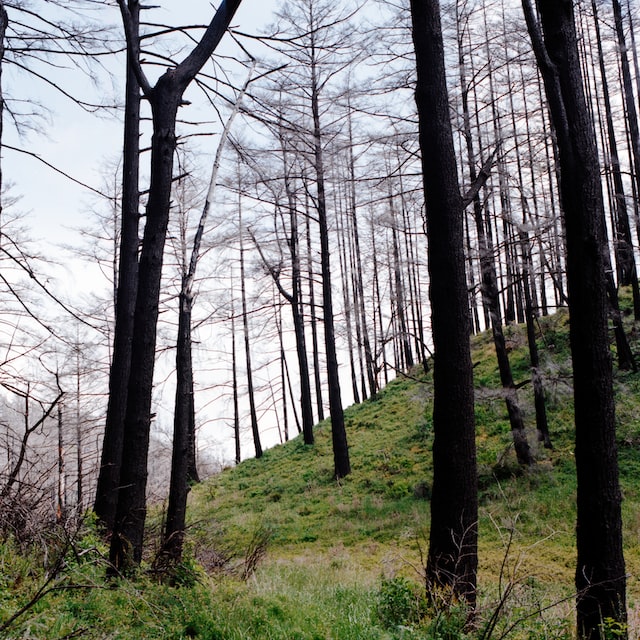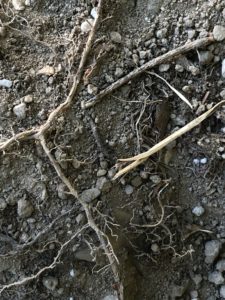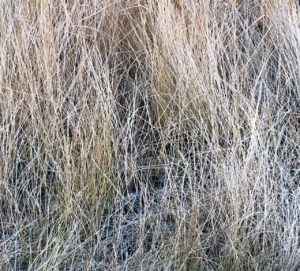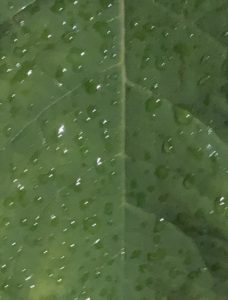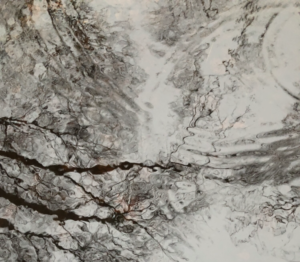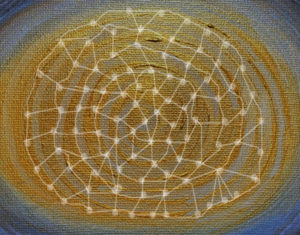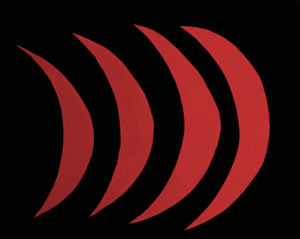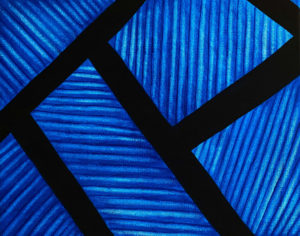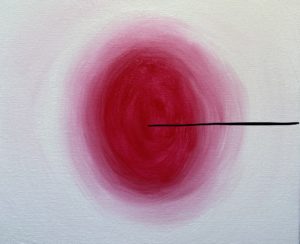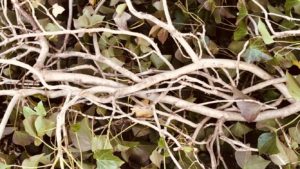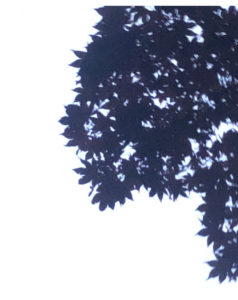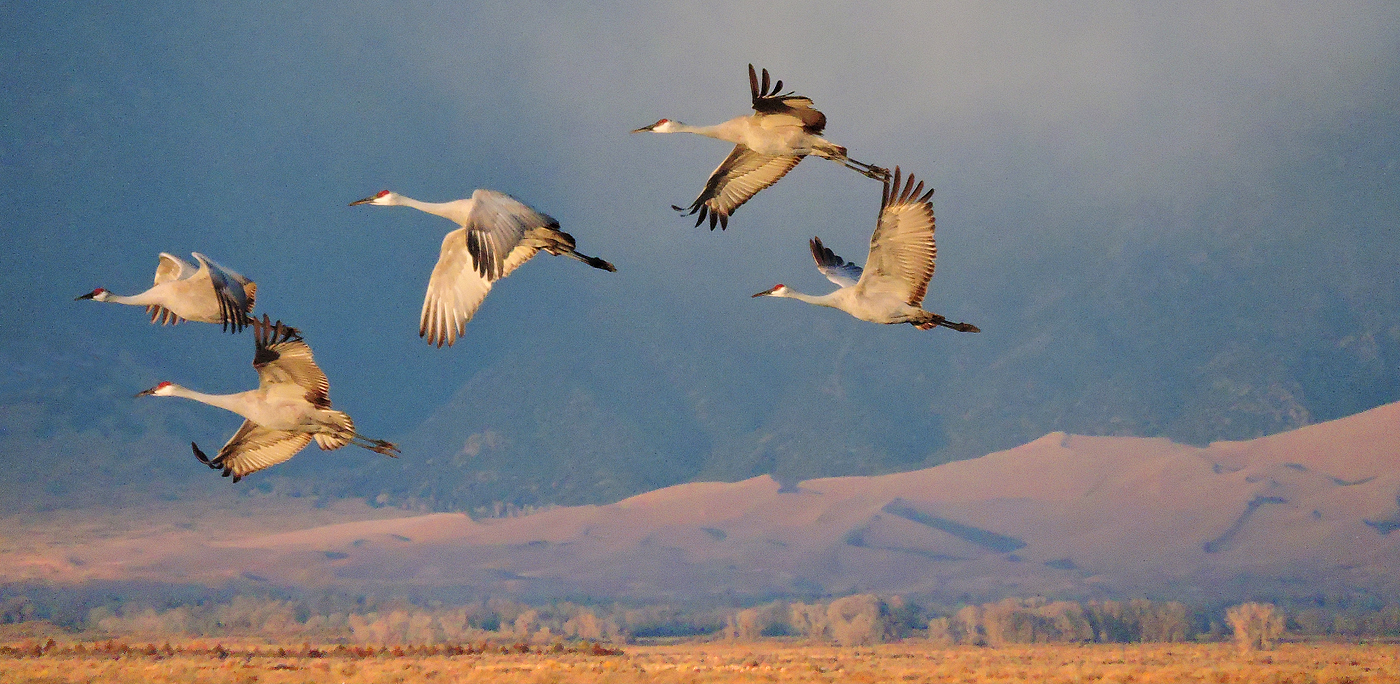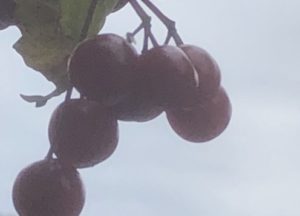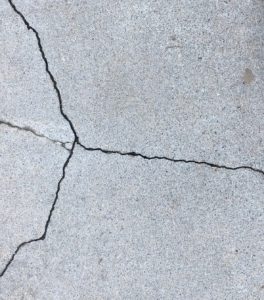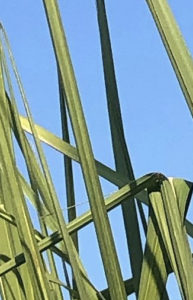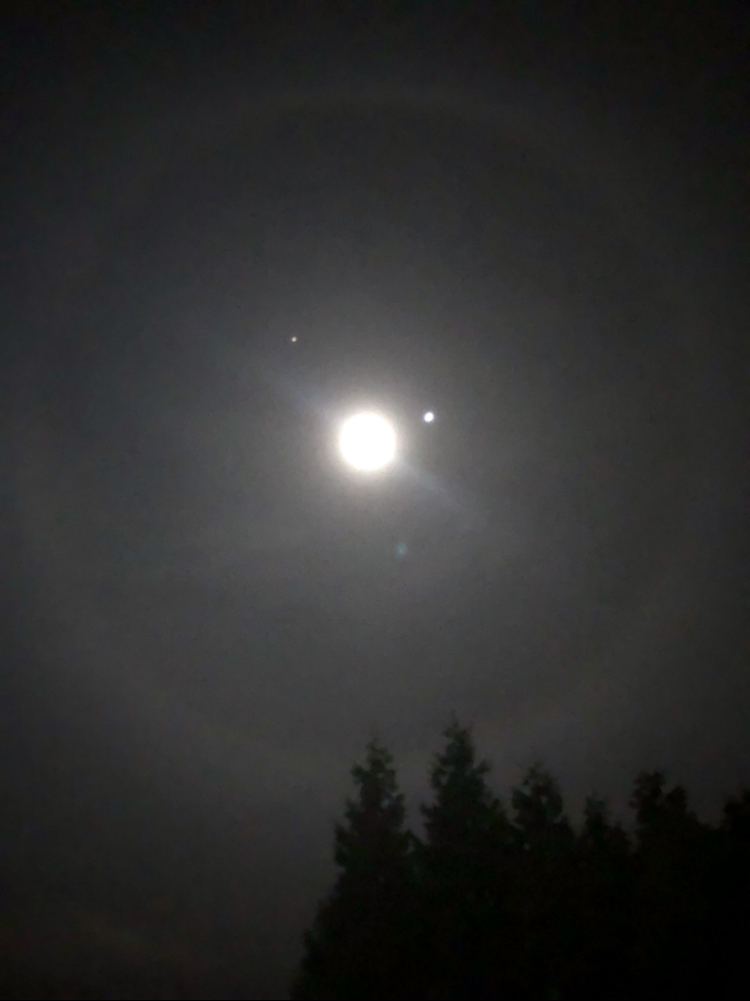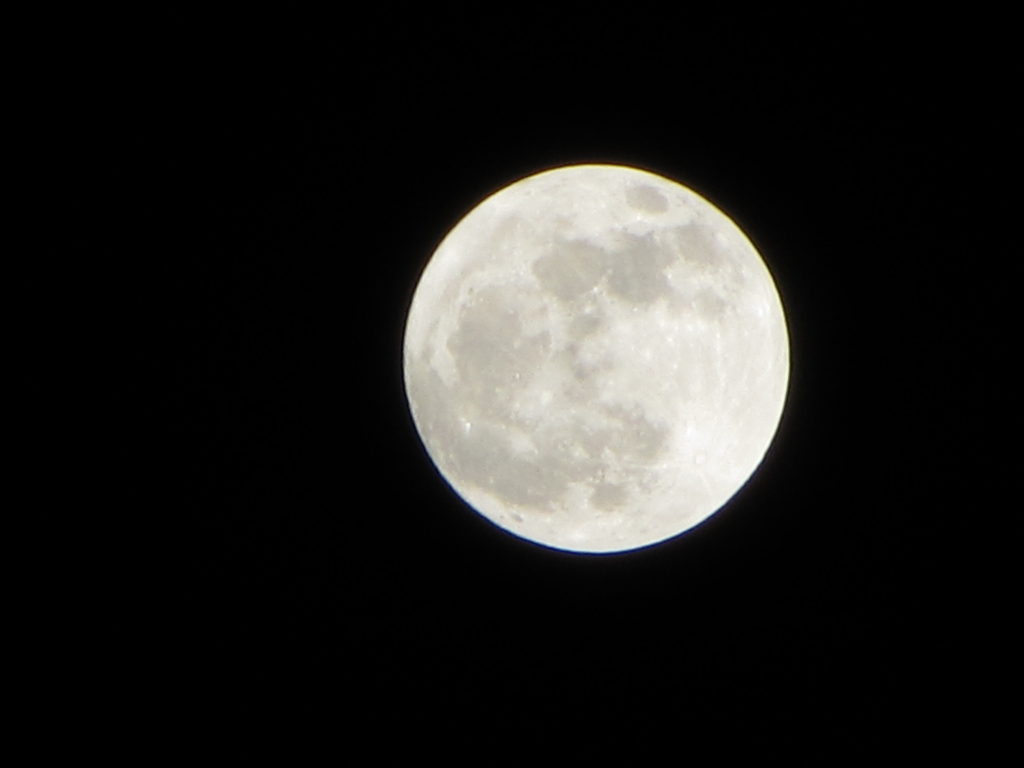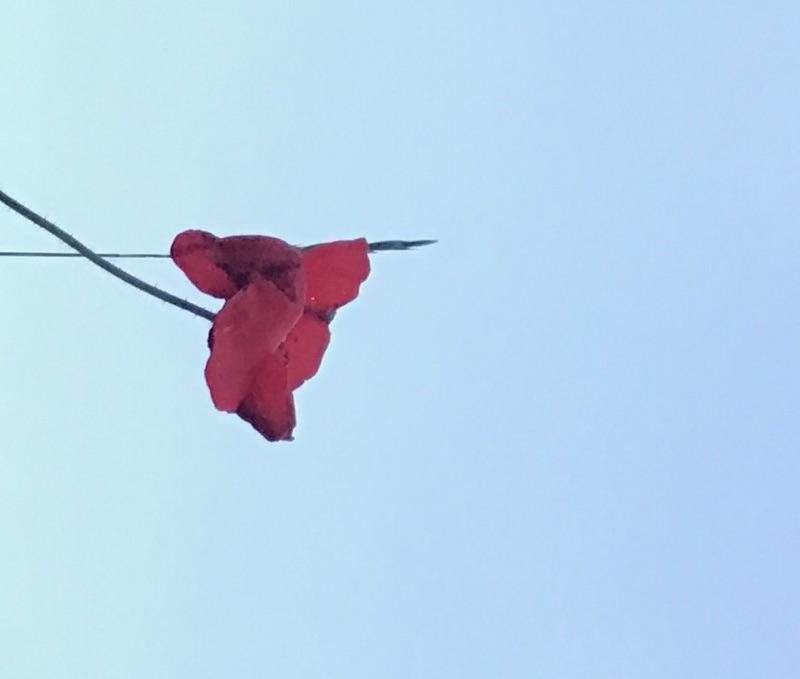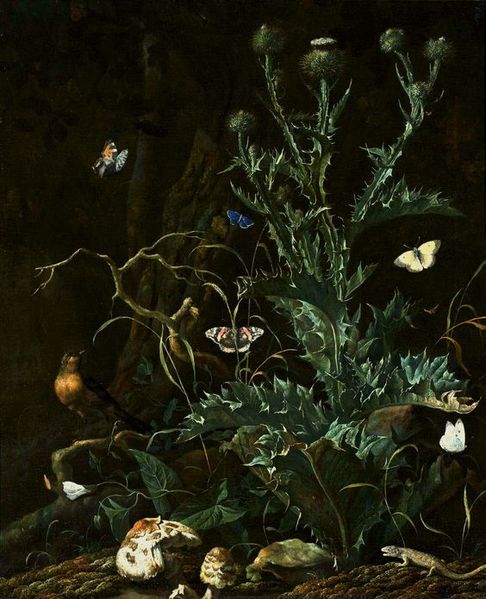As Suzanne Rancourt notes, her work is a bridge between disparate worlds, attempting to make connections between these worlds, whether they be the Indigenous and Anglo worlds, or the worlds of the veteran and the civilian. Her poetry (but not only her poetry) reflects a healing process that involves artistic creation as a method of “finding our way back home.”
Her first book of poems, Billboard in the Clouds (2004), evokes the prevalent themes in her work: the continuity of the past and its impact on the present, the interaction of childhood and adulthood, Nature, the enduring strength of family and heritage, relationships, and cultural loss.
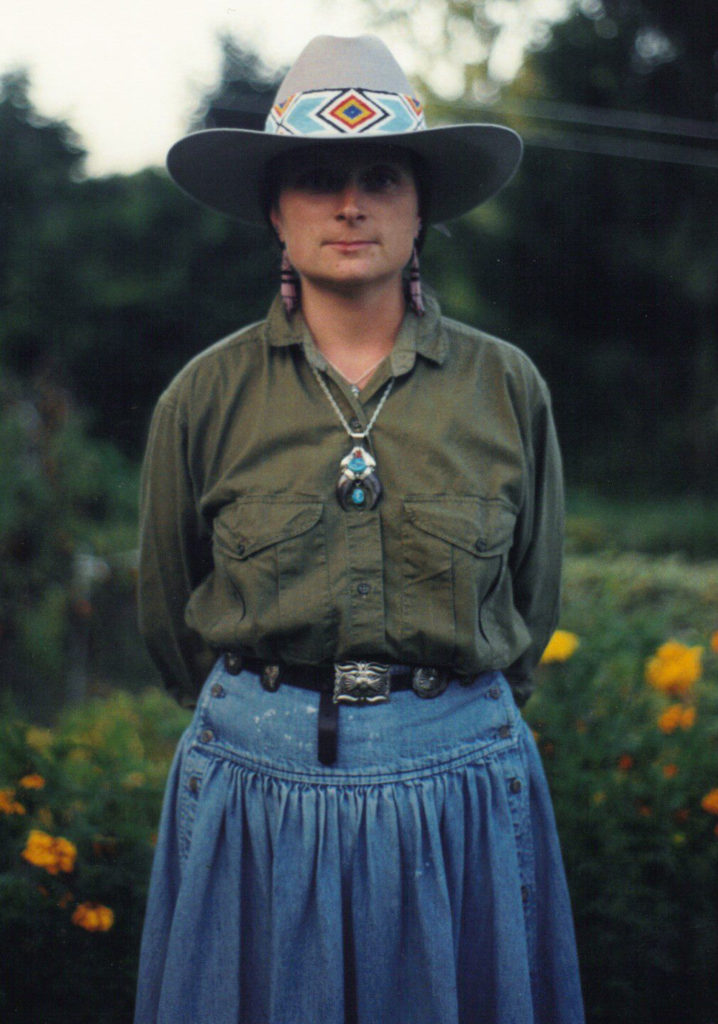
For example, in the poem “Even When the Sky Was Clear,” she recalls childhood experiences of observing her father’s connection to and understanding of Nature: “I would watch him/through my mother’s kaleidoscopic den windows,/ . . . I would watch my father/stand in the center of the dooryard appropriately round/ . . . Even in the summer/he’d look to the clouds, to the sky/at dawn, at dusk.” Her father was able to read Nature for knowledge of snow, rain, and wind. As an adult she stands “in a circle” and sings “to the clouds/in the language/my father/taught me.” In this way both the family and the broader cultural heritage are remembered.
The idea of the continuity of memory is also shown in “Thunderbeings.” In this poem Rancourt recalls her “Parisienne farm woman” grandmother, Dorothy, whom she called Memere. Memere, killed in a freak lightning strike in 1942 (before Rancourt’s birth) while touching a post of a brass bed, was an artist who “painted in oils/the light and dark of all things— . . . .” Rancourt recalls that as a child she would trace the brushstrokes on the paintings, “wondering where these ships were sailing/in my Memere’s head.” Then, forty years later, the adult Rancourt discovers the bed and polishes the “spokes and posters,” with the bed transformed into a “brass lamp” which “illuminated images of a woman/I never knew.” As the poem ends Rancourt writes: “For years I slept in this bed,/and often heard her/still humming in the brass.” Rancourt creates unexpected connections through visual imagery and forges a link between the grandmother she never knew and her adult self, between past and present.
That the link endures is also shown in “Haunting Fullblood.” Memere represented Rancourt’s European heritage, while in “Haunting Fullblood” Rispah is the Native “Grandmother to grandmothers” who embodies her Huron/Abenaki heritage and speaks to her “through the generations/ . . . Were you anything more than a photograph ?/Oh, yes, Rispah, Grandmother, my subtle bridge/over flooding time—shhh—/I am breathing proof.”
Her second book, murmurs at the gate (2019), extends and develops the themes in the first. In “Harvesting the Spring” she reflects on past springs and recalls how frozen ground would thaw so that she could “sink my feet into” the mud and how spring would blend into summer and the longed-for wild strawberries. She ponders the familiar memories, the certainties, of childhood, that often stand in contrast to the confusions and losses of adulthood. The poem concludes: “I long for wild strawberries/and the little girl/who used to pick them.”
There are also meditations on Nature in such poems as “Along the Shore—Five Miles,” “Grace” (“Gazing across the valley, across the Sacandaga, across the surface/ . . . drinking the self/drinking the Universe”), and “Swimming in the Eagle’s Eye.” In this poem she sits by a “secret” pond in quiet observation. She would lose herself in the “reflections of backward worlds” and, echoing Thoreau, “I recognized something/in this Eagle’s eye/this everything and/nothing/striking calm.”
However, she is more explicit in murmurs about the violence of war and her military experience. “When We Were Close” details a lover’s PTSD. “The Execution” uses “the photograph I grew up with,” Eddie Adams’ photo of the execution of the Viet Cong prisoner on the streets of Saigon, to ask about this incident, which is metonymic of the brutality of war, “You will remember, won’t you? Won’t you?” “Iron Umbrella” notes that “The burden of war is strapped to the backs of the survivors.” Other poems address her MST, as in “Against All Enemies—Foreign and Domestic.” The anger at her violation is palpable: “I wanted to kill you/assailant/because you violated my home—my body.” The story “The Bear That Stands” discusses in more detail her rape and its aftermath.
Rancourt also utilizes music to express her experiences. “Sisters Turning,” (co-written with Anni Clark, who also did the music), is based, as the liner notes indicate, on the “testimony and writings of Army and Marine Corps veteran Suzanne Rancourt.” In the song she recounts her military sexual trauma (MST) as a “naïve Marine” at the hands of a Navy man. This is her first betrayal. She tells another woman what happened, but is initially not believed. This, she writes, is her second betrayal. The song suggests that healing from MST can be facilitated by women trusting in the truth of the others’ experience: “Where do we turn/if not to each other . . . If we lose each other/we’ll never get home.”
Rancourt utilizes music, dance, photography, writing and other modalities to help others heal from various types of trauma, substance abuse, domestic violence, and Traumatic Brain Injury. Using her education, life experience, and training as a photojournalist and information specialist in the Marine Corps she created an integrated Expressive Arts program that promotes healing. She lives in rural New York State and works locally with veterans in a peer to peer program but also travels internationally to work with others to help them regain a sense of home.
*
The novelist Henry James wrote that “A writer is someone on whom nothing is lost.” If I expand James’ aphorism to include any creative artist, then Suzanne Rancourt is that artist “on whom nothing is lost.” Through memory, emotion, and observation Rancourt reveals the truths of her experience in all its dimensions.
LA: Let’s start with discussing your new book of poems. How does it continue or differ from previous work?
SR: My third book of poems, Old Stones, New Roads, has been picked up by Main Street Rag Book Publishing and is scheduled for release in Spring of 2021. Old Stones, New Roads differs from previous work in that I am further down the road in age and healing. The continuation aspect is seen in the things that simply remain the same, my spirit, temperament, how and where I was raised, my culture, and various trauma events. All of these factors propel my continued self-exploration, figuratively and literally. For example, this book is dedicated to my father’s mother, Alice Pearl, who collected stones. I clearly remember, as a child, sitting beside my grandmother in front of the stone hearth at the Porter Lake camp. I was incredibly young. I recall Grammie pointing to each stone and telling me where it came from and who brought it to her. Each stone had a story, a life, a history. Since a small child I have also collected stones.
I come from independent people who enjoyed travel. Mobility was supported at young ages: hiking, bicycling, driving, travel in a variety of vehicles, learning, exploring something about resonance of place and how some places “feel” more than others. I was encouraged to observe, ask questions, take note of how people lived, to respect differences and similarities and to figure things out. It is interesting to me, and hopefully readers, how where we come from is always brighter the further we travel from it. Part of this phenomenon helps me take a look at what is identity narrative and what is trauma narrative. Post-traumatic growth, for me, is being able, first, to recognize what is a trauma “story” and accept that that trauma “story” is not my identity, and then to ask, how do I transpose the trauma stories, tones, and images into syntactic stones, and new discoveries?
LA: Various themes emerge in your work: relationships, family/history, Nature, Indigenous heritage, impact of the past on the present, loss.
SR: The themes that emerge in my work are simply the themes of life that everyone has in various intensities and manifestations. It is in our commonalities, our collective consciousness, and shared experiences,that metaphor can rise up into our forebrains. Sometimes this happens subtly and sometimes not. Part of traveling to ancient and sacred sites strikes me as collective resonance. Maybe this is a type of empathy?
Perhaps there is something about dowsing. As you may know, I come from a family of dowsers and was taught to sit quietly in the woods, to be attentive. This clearly supported my multi-modal sensory development and still does. Some folks may refer to this as situational awareness, or Zanshin, or synesthesia or being present. Either way, it isn’t by living in the past that I explore the past. Au contraire. I must be firmly in the present to view the past, present and future. This is why stacking wood is one of my favorite meditations; I’m in constant movement while fully conscious of the past, present and future. I am willing to step into all the memories to find the beauty, the strength, and yes, grief and rage, and then emerge. I don’t heal or get stronger by denial, or by pretending that something never happened, or that I wasn’t involved in something. I am but a part of the natural world and the natural world is a part of me. No more, no less. Perhaps this is a way of annealing the Soul.
Furthermore, life isn’t linear. That is a Eurocentric perspective. Life is circular, non-linear. Some people experience life as an upward rising spiral, as opposed to Dante’s Inferno; we traverse through levels and layers of increased awareness that each experience offers in support of our progression. What stays the same? What changes? My writing is always a journey, an exploration, always something to learn, and yes, things can get pretty dark. One of the most profound lines of poetry I carry hails from a fortune cookie: “It is better to light one small candle than to curse the darkness.” Art- making is my light.
LA: Part II of murmurs at the gate seems to be more about military experience with reflections of the Vietnam War, like in “The Hunt,” “Iron Umbrella,” “Tsunami Conflict,” and “Ba Boom.” In “Throwing Stars” a “hyper-olfactory” stimulus sets off a memory of a traumatic event.
SR: murmurs at the gate is a deep exploration of events, memories, incidents, character development that ultimately reflects decades of exposure to war trauma in some variant form. Part II indeed dove into war and conflict experiences. All things in the physical realm change molecularly, atomically, when under pressure, and the intensity of fire. Elders always taught “that all truth is found in nature” if we know how to simply see that which is before us, no matter what the environment. My concreteness of a metaphor’s abstraction is always the natural world and/or my current environment. For example, when I taught creative writing at Clinton Correctional, the windows still had that old blue glass with the bubbles in it and it had the same thickness and blue hue as my Grandmother’s old Ball canning jars, the ones that had a rubber seal and a latch to hold the glass lid. The lessons of seeing what is before me, the environment, whatever that environment may be, offers an endless vocabulary for metaphor, similes, tension, meaning. Images and lessons from nature fuel my questioning that hopefully inspires others to question, wonder, consider.
As a writer, I distinctly recall being extremely young, fully open, and experiencing with all my senses, the outdoors. I had the good fortune of no video games and incredibly limited TV. For some reason, Western society attempts to lead us into a false belief that there is a magic this or that to eliminate memories and residuals of trauma. From my individual trauma survivor perspective, my experiences are what bring depth to my humanness. My poem “The Execution” is a true event, both the execution and my seeing the corner of the photo as a writing prompt. 1 I was trained in the Marine Corps as a photo journalist/journalist/public relations person. This training has made me keenly aware of how words and photos can spin propaganda, politics, and deliberately mislead the masses. That’s what this poem is about and when I read this poem at events, I read it once through without commentary. Then, I ask how many people recognize the photo I described. I follow that up with questions about the two main people in the photo. I follow that up with the truth about the individuals, the complete story to properly place the image in its true context. We have to look at the era, what type of film and photo equipment existed, and how point of view and images out of proper context can be manipulated to mean the exact opposite. The poem is a warning as much as anything. I end the brief discussion with a re-reading of the poem and note the measurable change in the audience. Think about it.
I believe the artist is a witness. This is my mission and perhaps this has been the mission all along right up to this specific moment for you to ask these questions and to whoever is reading this word literally, right now. I want people to ask questions. Many of the poems you have mentioned are true word for word. Some poems hold a person, image, of event that is nonfiction and then I enter into it and allow the narrator to question, answer, apply the “what ifs” without editing, just the freedom to express. This is where the surprises can emerge in the movement. Telling our stories is a bridge. Telling our stories is an action that connects generations, human to human. This is healing, this is “medicine.”
LA: How much does your military experience figure in poems like “The Hunt,” “Iron Umbrella,” “Tsunami,” “Throwing Stars,” and “Ba Boom”? You were in both the Marines and Army.
SR: My most recent time served was from ’05 – ’08 in MEDCOM. In “The Hunt,” for example, one place I was working at was an Airlift Wing where I had to pass through a hanger of Black Hawks. They seemed so docile cycled down and their prop blades really did remind me of the long ears of hunting hounds I grew up around as a kid, “their hound dog props pick up to attention/at the sound of clips, bolts, boots.” Also, worth noting, I know the difference between a clip and a magazine. Clip refers to snaffle-type or carabiner-type clip. Everyone was always on alert, always training, training that triggered rapid response. Sounds, smells, heart rate, respiration, everything in response to a hunt. A hound dog sound asleep only has to hear a minute sound and they’re by the door and fully alert. “Iron Umbrella” was inspired by a black and white photo prompt of an indigenous father and son clearly in a tropical country that, of course, was in the throes of violent conflict. I gave myself permission to ask questions of those characters and let my narrator respond freely. I allowed my military experiences and being a parent to inform and fuel my narrator. In this way, the tone remains authentic, the story plausible and real. The poem “Tsunami Conflict” is what I call truth-inspired because the shell is a gift that a Viet Nam era vet gave me decades ago. It was something that he acquired when on leave and carried in his A.L.I.C.E. [All-Purpose Lightweight Individual Carrying Equipment]. I still have the shell. It is on my desk and I can reach out and touch it even as I write this. I hold the shell, sometimes. It brings comfort, simply brings comfort. “Throwing Stars” is a true account. Smells. “Twenty years later when I’m at the park at Saratoga,/You’d hardly notice that I knew anything./And if it weren’t for my hyper-olfactory,I would have forgotten you.” Some smells one can never scrub clean of. “BA BOOM” is a tone poem that is driven by the adrenalized beating of one’s heart – hard, strong, the type of beating you hear from the inside of your body, the type where it feels like your heart will explode violently through your chest. The title, in bold capital letters, when spoken is one’s heartbeat, you know, that onomatopoeia thing, while also exploding. There is a tension of hypervigilance in this poem that hopefully helps people who have never felt such things, to feel with their bodies via the vagal system, primitive brain, not the forebrain.
All of my experiences get transposed into an “experiential” vocabulary for my art- making. A metaphor requires two parts: a bass line and a melody, concrete and abstract. Our bodies are naturally wired to remember sights, sounds, smells, air tension displacement and much more than we are even consciously aware of, like the situational awareness/hyper-vigilance combat and other threatening situations require. How could I not draw from my military experiences? Or any of my life’s data? Writing as craft is the skill of shaping, forming and transposing these stories into a form that people can receive.
My military time is what they refer to as broken time, meaning I was in, out, in again. When I first went into the Marine Corps, the times were way different. I am an MST survivor, veteran, and have been the spouse and partner of combat and non-combat veterans. Thus, my military experience is multi-faceted.
My MST happened while in the Marine Corps attending my photo journalist/ Public Affairs/Information Specialist training. Things went downhill rather quickly after that. My next stint was in the Army because back then I would have had to give complete custody of my child over to someone else. I declined. My second MOS was a Medic. I fulfilled my commitment and moved on after also working as a Chaplain’s Assistant. My most recent time in was from 2005 – 2008. By then a whole lotta shit was catching up with me that I had never addressed. That’s when I connected, for the first time ever, with Travis Martin’s organization Military Experience and the Arts, now headed up by David Ervin. My life changed significantly and for the better. I’m still in contact with many of the folks from that first MEA 2012 Symposium. murmurs at the gate is what I refer to as my heuristically-inspired “poetic dissertation.” It was the first time in my life that I could safely acknowledge how much the military was, and still is, who I am. The word is validation.
LA: In Native Voices the editors note that ‘Fabric’ and ‘The Smell of Blood’ are fine examples of her ability to intertwine personal experience and communal history.” 2 Is this what you try to do in your work? What is your creative process?
SR: Ahh, my poem “Fabric,” so much love and loss in that poem. Better to have had some good love than none. I wrote the first version literally decades ago and was told by an academic that it was garbage. I did not throw the piece out as suggested. I trusted something deep inside me that said no, that it was a strong poem and I held onto it. I held on to myself. In 2015 I was invited to write a piece for a special women veteran’s issue of Combat Stress magazine 3 [released January 2016] entitled, “Women Veterans and Multi Modal Post-Traumatic Growth: Making the Tree Whole Again.” By then I had experienced several failed marriages, lost so many people that I had truly loved, been retraumatized in a variety of ways linked to unresolved military experiences, that I rediscovered the poem. I renamed it “Fabric.” As a result of new connections with the military community, I had finally been receiving the help I needed to make sense of things and recognize unhealthy patterns and beliefs. And, I was always writing. I tweaked the poem and added the last two lines about accepting life, love, and loss. I am a human being and so are my readers. The causes of our specific experiences, i.e. love, loss, violation, may be vastly different, however, our humanness connects us. By diving below the surface of self, into the currents of hurt and love, I give myself permission to validate with words and images. And this, I feel, lets others know that they are not alone in their existence. We see each other. Indigenously, if I say, “I see you,” it means that I see ALL of you and it has really nothing to do with your occupation or your wealth or poverty. I see who you are. I see you. We see each other. Sometimes it is but a flicker in one’s eye or a microexpression, but the soul is there. This reflects my work experiences with people in comas, or people who are quadriplegic – this skill of seeing isn’t really about using my eyes to visually see. Recognition is something far deeper than that.
Because of the types of trauma that I have experienced, coupled with a rich memory base of the powerful smells from the natural world, and also my quirkiness, I have always had a strong sense of smell. Bears can be like that. I did not sit down with the intention to write “The Smell of Blood.” It could have been something as subtle as passing a person in a store who wafts a certain odor or literally a restroom with old trash. I used my writing to release the reaction that became a list poem of sorts. When I do the first write of a piece I just let ‘er rip. Patterns, rhythms, meter – all that reveals itself in the rereading and editing process. I am an honest writer, meaning, I just say it. This poem offers an opportunity for people who have not experienced trauma to feel on a cellular level anxiety, a triggering event, run-away thoughts. As a writer I had to be responsible of the climactic curve and tempo. This poem had to have that final line to allow for breathing, release, resettling. When a person’s PTSD is triggered, it doesn’t make sense to most folks. This poem lets people know that I hear them. It offers validation. We are not alone here, in the in-between “…in the lives outside of reasoning.”
LA: You mentioned that you were influenced by Robbe-Grillet, Samuel Beckett, and Eugene Ionesco, among others. What impact did they have on you?
SR: My mother used to sing that Cinderella song to me, the one that goes “In my own little corner…I can be whatever I want to be.” As a young child this is possible. However, one hits a certain age in child development and realizes the outer world can be quite cruel. That’s when creativity gets shut down and injured on so many levels and in so many ways. Much later in life I reignited my creative self. This rebirth, if you will, was definitely fanned by the freedom that Robbe-Grillet, Beckett, and Ionesco said yes to. Trauma, especially when it occurs to children, can close us up. The innocence of being open is no longer safe. As I matured intellectually, spiritually, physically, I discovered healthier ways to be open and safe. Some folks may refer to this as “self-regulation.” To finally have the go-ahead from significant creatives to ask questions, explore and discover through art-making, I was finally able to feel comfortable in my own essence as writer and human being. Just think of me as an example of the 100th Monkey, the one that breaks the pattern, walks point, changes the outcome, someone has to do “it” first.
LA: What do you mean by “I Am My Own Evidence”?
SR: I am my own evidence. Yes. And my evidence and experiences are as valid and, in some cases, more so than any individual in any hall of academe or therapeutic field. My experiences as a kid, my theories, came from very physical experiences, often pain- related, like profound migraines, for example. Only within the last decade has neuroscience been able to offer data that I frequently wrote about in various fields in the 80’s, ‘90’s, and early 2000’s. I am multi-modal, which is no different than cross-fit training. I am making sense of my world through the senses and art-making modalities available to me and that includes what is culturally specific, whatever those cultures may be. Be authentic. Be yourself. Let your narrators tell the story because there is absolutely no way your own experiences will not find their way through your narrator. For people who would like to research this more, look into Heurism as research method. A fantastic text is Clark Moustakas’s book, Heuristic Research: Design, Methodology, and Applications. 4 This understanding and method is one reason why I refer to murmurs at the gate as my poetic dissertation.
LA: You work in various modalities: poetry, song, photography, dance, drum-making. How do these all connect?
SR: The various modalities that I express and create through connect within myself as a human being and also as a living, neurological organism. Each modality has a predominant or primary sense that it requires for expression. For example, dance for me is physical and relates to all that movement requires, singing actively engages my auditory mechanisms including self-soothing, photography fires up my visual cortex and all that that requires, and so forth. Writing is like the piano for me in that to learn the piano one learns all the keys and therefore can read music for all instruments. Writing is my primary modality where I can use all sensory mechanisms to better engage the reader and/or listener. This is my cross-fit training and I do include actual physical fitness! The connection is the whole person that is me. It has taken time for me to get here and I certainly didn’t get here on my own. I had to ask for help and thankfully there have been and still are really good people who are there for me. This is called Community, with a capital C.
LA: You did some songs with Songwriting with Soldiers: “Running Out of Flags” and “Just This Side of Freedom.” How did these come about?
SR: It took me a long time to get up the courage to apply and attend the Songwriting with Soldiers retreat in New York. Those two songs were written in 2015 and I had just finished up about a year and a half of seriously intense work with the MST doc at the local VA. I was still pretty squirrely. An Air Force woman vet and I were teamed up with James House to write “Running Out of Flags.” Again, I brought what I know to the table. I am the recipient of two of our nation’s casket flags. I know what it’s like to have people in dress blues show up. I know intimately that grief that I still carry. I lived through the Vietnam War. I remember the Kennedy assassinations, MLK assassination, Civil Rights movements, war, violence, more war, more violence … what are we creating? How many generations will forever be scarred by our actions?
Oh oh they’re running out of flags
How many more are they gonna have to make
Another one flies in the cold at half-mast
Take a thousand years to call out all the names
“Just This Side of Freedom” is a song that came forth when I was paired up with Darden Smith. 5 There are two versions of this song. I brought to the table my original version to which Darden applied his professional songwriting skills to create the second, Songwriting with Soldiers version. The first version I titled “Sacred Light” and it emerged from one of my lowest life points. I gave myself permission to let the weight of my plight flow. I wasn’t in a good place. I was on the verge of being homeless. No job. Life was bottoming out and shitloads of unresolved trauma – decades worth – was all bearing down on me. I have had trauma events where I was dead, without life, and had to be brought back. Western medicine doesn’t talk much about this type of death experience phenomena with trauma survivors or even acknowledge it. So, one aspect of the song was to give voice to that in-between place and to validate my fellow in-betweeners. Western medicine will call us crazy when, in fact, what we’ve experienced is most real. The “Sacred Light” version speaks of a clear memory of one of my experiences. My Indigenous ceremonies that I participate in and conduct are what bring comprehension to my experiences that I offer up for others’ validation: you’re not crazy; when the Soul, spirit, life force – whatever you want to call it – leaves the body, it is a type of self-preservation; and, I’m still here because you need to hear what I am telling you, we can get through this too. You are not alone.
After I wrote the song, I would listen to it from the inside out. I felt the chords, the incredibly slow tempo, the tone. I was too close to an edge. This song is when I realized I must get help. When I play this song out in public, I always pay attention to the people who respond to it and have even stated generally to the audience my story and that we are not alone on this journey. There is help right here. Right now. There will always be wars. There will always be warriors. There will always be warriors, both men and women, coming home and therefore there will always be a need for an empathetic Community to welcome them home, validate their experiences, be present in the Coming Home process, which for some of us has taken decades if not lifetimes.
I have also had the great experience of working with Jason Moon’s program, Warrior Songs, where I teamed up with Anni Clarke for Women at War Warrior Songs Vol. 2, “Sisters Turning.” 6 Ironically, Jason didn’t know that I was from Maine when he paired me with Anni Clarke who attended U.M.F. [University of Maine at Farmington] at the same time I did. Synchronicity…is it?
LA: Can you talk about Expressive Arts Therapy? How does art help “find your way back home?” How does art lead to healing?
SR: Expressive Arts Therapy 7 is a relatively new field for Western/colonized societies.
Positive psychology, I have found, focuses so intently on keeping all things positive that it negates and fails to validate the trauma experience of the trauma survivor. Granted, this method creates a bubble-pack buffer zone around the therapist/counselor that better protects the therapist/counselor from client trauma transference; however, from a military trauma survivor perspective, especially military sexual trauma, this active practice of only perpetuating the positive exacerbates the “same ol’ shit” of non-validation wielded stringently when attempting to report rape in the military system. I mention this to better clarify that Expressive Arts Therapy draws more from the Phenomenological and Heuristic philosophy schools where we use a variety of art-making modalities in safe, respectful settings that support the natural emergence of experiences via the art modality in action. There is indeed a sound paradigm from which methods of application are skillfully employed. The process remains fluid within a frame designed to support the modality being used, the participant(s), and the experience as a whole. Healing is usually an uncomfortable and sometimes painful experience. Just because we deny its existence, doesn’t mean it isn’t constantly working in the back ground like some software worm. murmurs at the gate is what emerged when I delved into those hurtful places. There are also poems of profound beauty and sensuality in murmurs at the gate that emerged from the darkness of trauma. Neurologically, the brain is a fascinating mystery that Expressive Arts Therapy is accessing when application practices are comprehended. I was way ahead of my time with multi-modal practices and the more I worked with adult survivors of Traumatic Brain Injuries, the more I realized I had to keep learning. Hence, this learning led to numerous degrees, certifications, cultural immersion, and a reclaiming of identity, because back then there simply wasn’t anything close to Expressive Arts Therapy. My entire life is the validation of existence and all my experiences that have brought me to this point and wherever I travel to next. A friend in the Army, a very long time ago, called me “Pathfinder.”
LA: In your essay for Combat Stress, you mention your 1978 MST. How does trauma and the experience of the military and war come out in your work?
SR: I’m more of a Wilfred Owen fan because he describes the in-between weirdness of PTSD along with what we now refer to as moral injury. No fanfare. His work offers what he sees and what he feels, not what he interprets…Holding on to the concrete is a way to remain “in body,” so to speak, to remain present in the unreality of trauma events swirling about you. When brain chemicals are released en masse and tsunami into your physical body…shit happens…sometimes literally. This neurochemical wash of neurotransmitters can be akin to dropping acid. There are specific things that happen that only another who has experienced may recognize. I recognize this in Owen’s work. I also recognize this in Rod Serling’s The Twilight Zone. When I’ve read and watched documentaries of J.D. Salinger, I also recognize behaviors that reflect experiences, perhaps, from his WWII trauma, and I wonder if Salinger wasn’t attempting to deliberately trigger this neurochemical dump to comprehend or re-create a tone or a sensory experiences. Neuroscience has indicated that trauma can change our DNA. Perhaps that’s where my idea for a PTSD equation emerged from. [(trauma event over intensity) x (duration over frequency)] x by length of time, i.e. 1 week, 3 mos., 18 mos. 2 yrs., 20 yrs.
I’m finally at an age where all of my experiences are a part of me and I’m O.K. about that. Therefore, to quote another one of my favorite writers, “How not?”
LA: How has your work evolved over the last 20-30 years?
SR: My work has evolved because I have evolved as a human being. I never give up. Giving up is never an option. It’s just who I am, it’s my temperament. In this process I have become more informed in my professional fields and more accepting of who I have been, am now, and becoming. Outward Bound winter survival when I was sixteen. Wow. Then Parris Island. Again, I am alive because somehow my upbringing and who I am was able to transpose events into strength. I still do Aikido and Iaido. This quarantine is profoundly difficult for many and I miss my Dojo. Ceremonies have helped me make peace with being solo. The natural world, my land, I remain in relationship with. Self-discipline is crucial. Being in recovery essential. The last 20-30 years I have gathered tools.
I have had, and continue to have, some amazing elders, mentors, editors, and my family who have painstakingly kept me going. I will always have profound gratitude for my family and the future of my family. Being able to ask for help and then being willing to receive help is key not just in my survival, but in my thriving. As a writer my craft is strengthening and changing. I love it. I never know what will emerge, what new relations will I meet and make, and where will this next thread take me. The wind, you see, it’s always in the wind. 8
1 The poem appears on pp. 50-51 of murmurs at the gate and refers to Eddie Adams’ famous photo. See, for example, https://www.nytimes.com/2018/02/01/world/asia/vietnam-execution-photo.html
2 Native Voices: Indigenous American Poetry, Craft and Conversations, ed. by Marie Fuhrman and Dean Rader, North Adams, MA: Tupelo Press, 2019, pp. 270-279.
- Combat Stress, Vol. 5, No. 1, January 2016, https://stress.org/wp-content/themes/Avada-child/lib/3d-flip-book/3d-flip-book/?mag_id=16192, pp. 72-86.
- Clark Moustakas, Heuristic Research: Design, Methodology, and Applications, Sage Publications, 1990, Moustakas, Clark. Heuristic Research: Design, Methodology, and Applications. United Kingdom, SAGE Publications, 1990.
- See Songwriting With: Soldiers video: https://www.pbs.org/video/klru-tv-their-words-songwriting-soldiers-episode/; web site: https://www.songwritingwithsoldiers.org/;
- Women at War: Warrior Songs Vol. 2, available through warriorsongs.org
- See https://www.ieata.org/
- Suzanne Rancourt website: https://www.expressive-arts.com/index.html; books: Billboard in the Clouds (2004), Curbstone Press, https://nupress.northwestern.edu/content/curbstone-books; murmurs at the gate (2019), Unsolicited Press, http://www.unsolicitedpress.com/; Old Stones, New Roads (forthcoming, 2021), https://www.mainstreetrag.com/
